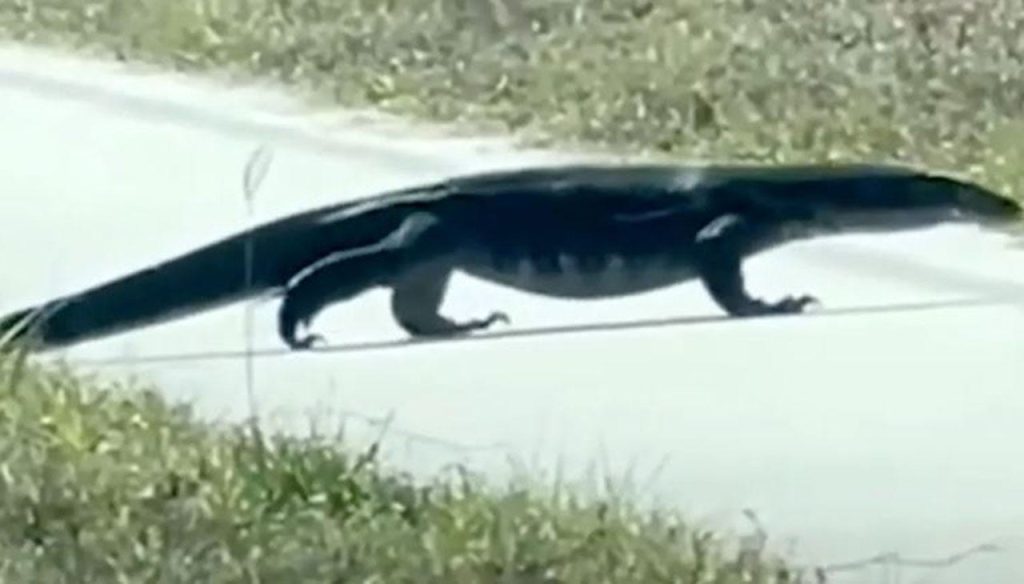A large, 5-foot-long lizard believed to be an Asian water monitor was spotted on a busy road in western Florida, causing surprise among onlookers. The lizard was captured on video by a woman named Renee Aland, who called the Florida Fish and Wildlife Conservation Commission after initially mistaking the lizard for an alligator. Aland’s daughter, Zoey Marzonie, compared the lizard to the giant pet lizard Mrs. Kipling from the Disney Channel show “Jessie.” Despite the excitement of seeing the rare lizard, Aland expressed concern about the impact these invasive species might have on the local ecosystem, as Asian water monitors are known to be voracious eaters.
The Asian water monitor, although not native to the U.S., is common as a pet and is not illegal to own, according to the U.S. Fish and Wildlife Service. These lizards are typically four to six feet in length and have a varied diet that includes snakes, insects, birds, frogs, rodents, and small birds. Due to their size and eating habits, they are considered one of the largest lizards in the world. The presence of these invasive species like the Asian water monitor and the Peter’s rock agama, which was recently seen moving up the coast of Florida, is a concern for experts like Ken Gioeli, a natural resources extension agent with the University of Florida. They are causing impacts on the environment, and the full extent of their effects is still being studied.
The Peter’s rock agama, another non-native species, has been documented in Florida since 1976 and has spread to 20 counties from Monroe to Volusia. This lizard is native to tropical, sub-Saharan Africa, and its presence in Florida is attributed to the pet trade and accidental releases or escapes. Residents of West Melbourne have reported sightings of the red-headed agamas, which have been labeled as part of “the invasion front” by Gioeli. The Florida Fish and Wildlife Conservation Commission is monitoring the spread of these invasive species and studying their impact on the local wildlife and ecosystem.
The encounter with the Asian water monitor in North Port highlights the potential risks posed by non-native species to local wildlife populations and ecosystems. While the appearance of these lizards may be fascinating to observe, their presence raises concerns about their impact on the environment. The Florida Fish and Wildlife Conservation Commission is working to track and manage invasive species like the Asian water monitor and the Peter’s rock agama to mitigate their effects on native species. As the presence of these non-native species continues to grow in Florida, researchers and experts are studying the consequences and developing strategies to address the challenges posed by invasive wildlife species.













